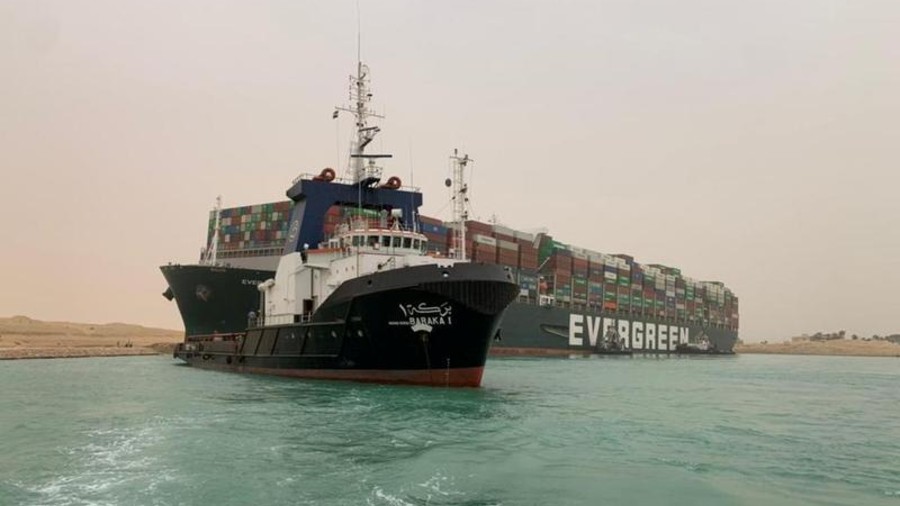The mammoth cargo ship blocking one of the world’s most vital maritime arteries was wrenched from the shoreline and finally set free on Monday, raising hopes that traffic could soon resume in the Suez Canal and limit the economic fallout of the disruption.
Salvage teams, working on land and water for six days and nights, were ultimately assisted by forces more powerful than any machine rushed to the scene: the moon and the tides.
The ship was ultimately set free at around 3pm (local time), according to shipping officials. Horns blared in celebration as images emerged on social media of the once stuck ship on the move. But just as the tides rose and fell, optimism waxed and waned throughout the day on Monday as each bit of encouraging news was met with words of caution.
The stern, or the back of the ship, was clearly free from the land early on Monday. But for hours until the ship was finally freed, it had remained uncertain if the ship’s bow had been truly pulled from the mud and muck on the banks of the canal.
Salvage crews had worked around a schedule largely dictated by the tides: working to make progress during the six hours it would take for the water to go from low point to high and then back again.
With a full moon on Sunday, the following 24 hours had offered the best window to work, with a few extra inches of tidal flow providing a vital assist for their efforts.
Throughout the night on Sunday and into on Monday, tugboats worked in coordination with dredgers to return the 220,000-ton vessel to the water.
Then, just before dawn, the ship slowly regained buoyancy.
It was a turning point in one of the largest and most intense salvage operations in modern history, with the smooth functioning of the global trading system hanging in the balance The army of machine operators, engineers, tugboat captains, and other salvage operators knew they were in a race against time.
Each day of blockage put global supply chains another day closer to a full-blown crisis.
Vessels packed with the world’s goods — including cars, oil, livestock and laptops — usually flow through the canal with ease, supplying much of the globe as they traverse the quickest path from Asia and West Asia to Europe and the East Coast of the US.
With concerns that the salvage operation could take weeks, some ships decided not to wait, turning to take the long way around the southern tip of Africa, a voyage that can add weeks to the journey and more than $26,000 a day in fuel costs.
Each bit of progress in moving the ship over the weekend was celebrated by the workers on the canal — tugboat horns blaring and shouts of joy often echoing in the desert dark.
Late on Saturday, tugboat drivers sounded off in celebration of what was up to that point the most visible sign of progress since the Ever Given ran aground lateon Tuesday.
The 1,300-foot ship moved. It did not go far — just two degrees, or about 100 feet, according to shipping officials. But that came on top of progress from Friday, when canal officials said dredgers had managed to dig out the rear of the ship, freeing its rudder.
On Monday morning, the movement of the ship was even more dramatic — with tugboats able to almost completely straighten the vessel.
But it was still unclear whether the bulbous bow — a protrusion at the front of the ship just below the waterline — was truly free.
Peter Berdowski, the chief executive of Royal Boskalis Westminster, which has been appointed by Ever Given’s owner to help move the vessel, told the Dutch public broadcaster NOS on Monday that he understood the bow to be stuck “rock solid”.
“The ship is like a giant whale that we have to slide off the beach, back in the water,” he said early on Monday. Pulling the stern lose, he said, was the easy part.
“We shouldn’t start cheering just yet,” he cautioned.
A few hours after he made his remarks, President Abdel Fattah el-Sisi of Egypt celebrated the moment on Twitter, writing that “Egyptians have succeeded today in ending the crisis of the stuck ship in the Suez Canal despite the great complexities surrounding this situation in every aspect.”
New York Times News Service










